Back To College Life
Today I'd like to invite you to travel back in time with me and let's have a look at what college life looked like 400 years ago in Transylvania and how it developed into what it is today.

Transylvania is part of Romania today, but it wasn't always the case and the region has a rocky past.
After the Battle of Mohács in 1526 it belonged to the Eastern Hungarian Kingdom, from which the Principality of Transylvania emerged in 1570 by the Treaty of Speyer. During most of the 16th and 17th centuries, the principality was a vassal state of the Ottoman Empire; however, the principality had dual suzerainty (Ottoman and Habsburg).
In 1690, the Habsburg monarchy gained possession of Transylvania through the Hungarian crown. After the failure of Rákóczi's War of Independence in 1711, Habsburg control of Transylvania was consolidated, and Hungarian Transylvanian princes were replaced with Habsburg imperial governors. source
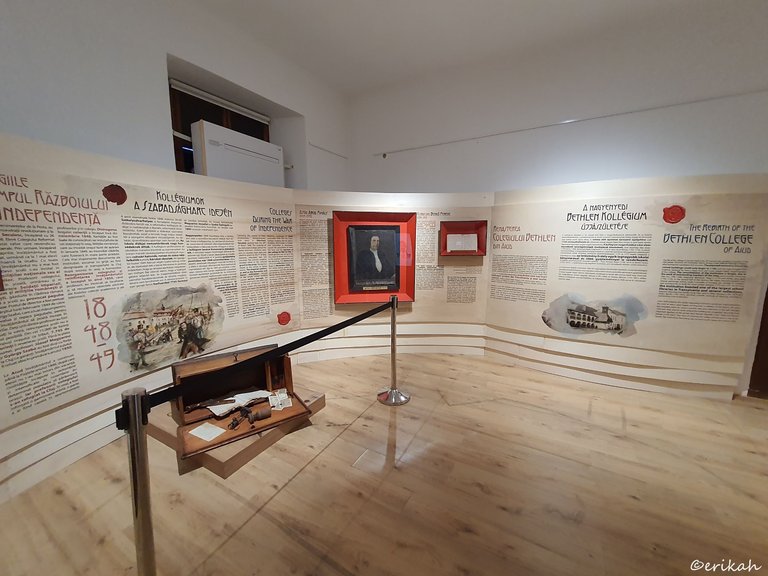
Back in those times, as I mentioned in my previous post, there were no public, government funded schools. Nobles and rich people were the ones funding schools and/or students to some extent, but tuition fees were paid by students. This is how education was only available for a selected few and most of the time not for the truly gifted. This had its consequences as well and not good ones in some cases.
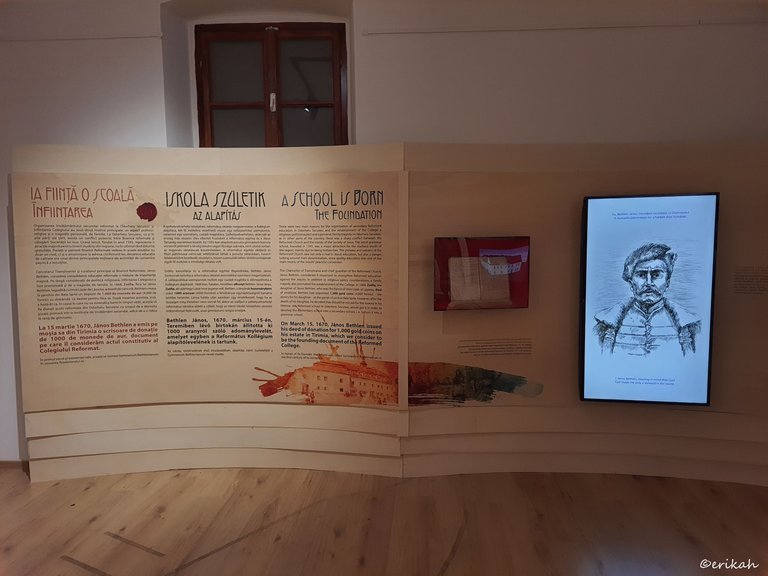
However, there were exceptions as well. In Udvarhely (which is called Odorheiu Secuiesc in Romanian). Founded in 1593, the Jesuit grammar school was free for everyone, but there was a conflict with the Reformed church and thus the need for a new school was born.
On March 15, 1670, János Bethlen issued his deed of donation for 1,000 gold coins on his estate in Teremi (Tirimia), which we consider to be the founding document of the Reformed College.
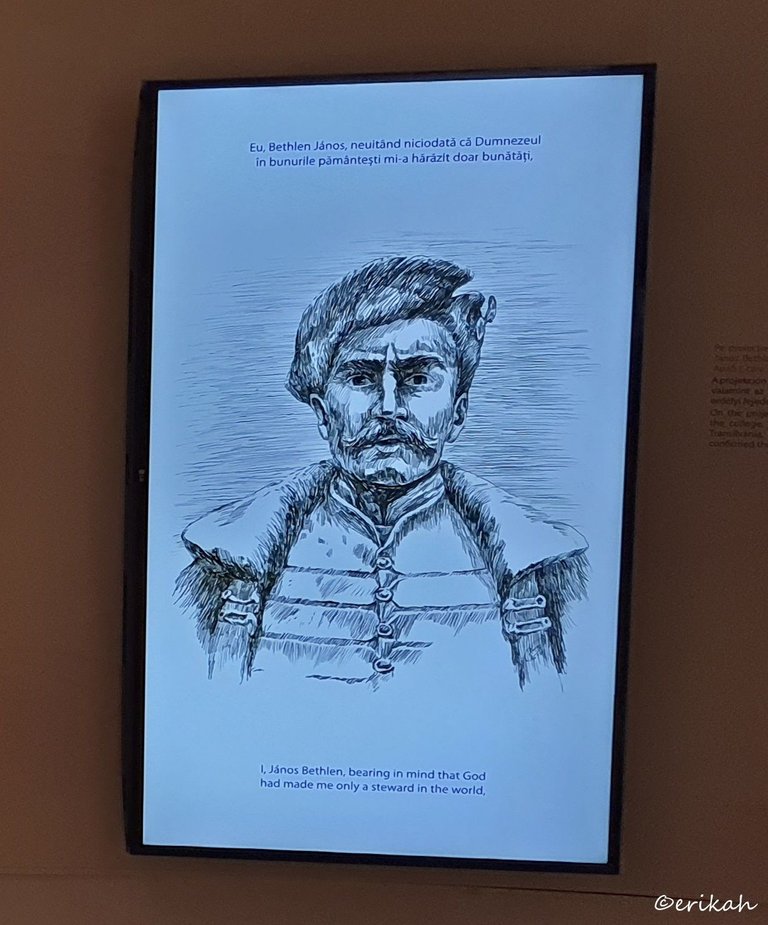
This was a very cool thing. This illustration was literally talking. The person you see here is none other than János Bethlen, reading the document he signed.
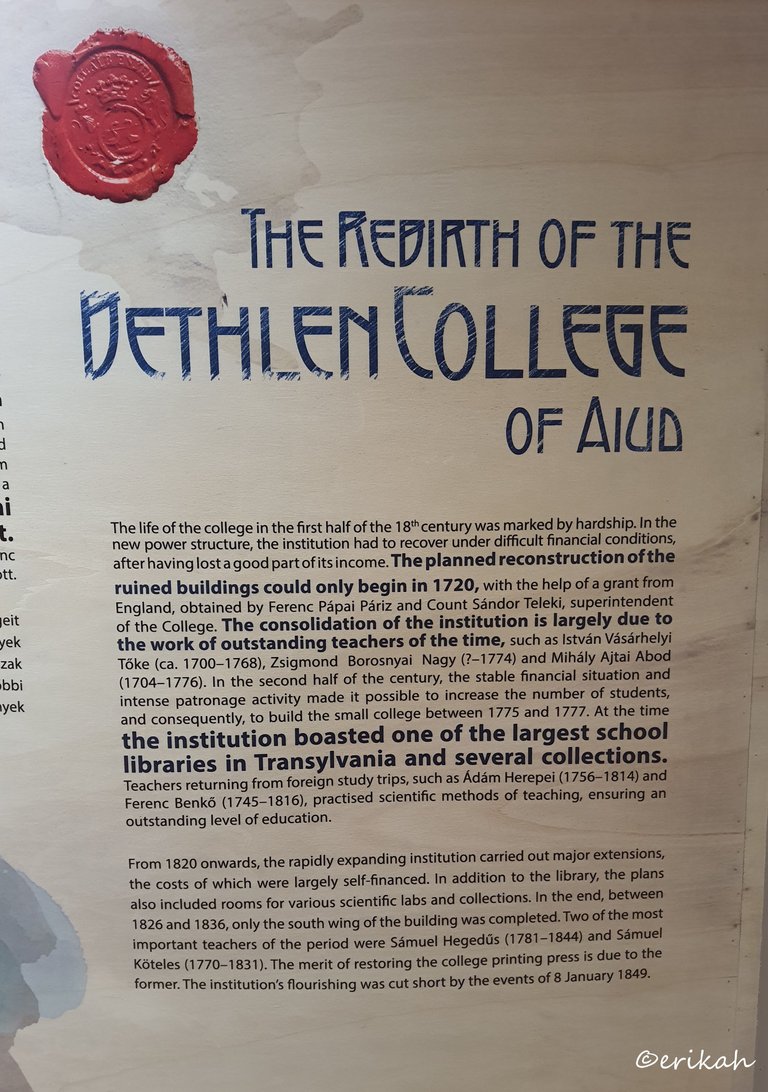
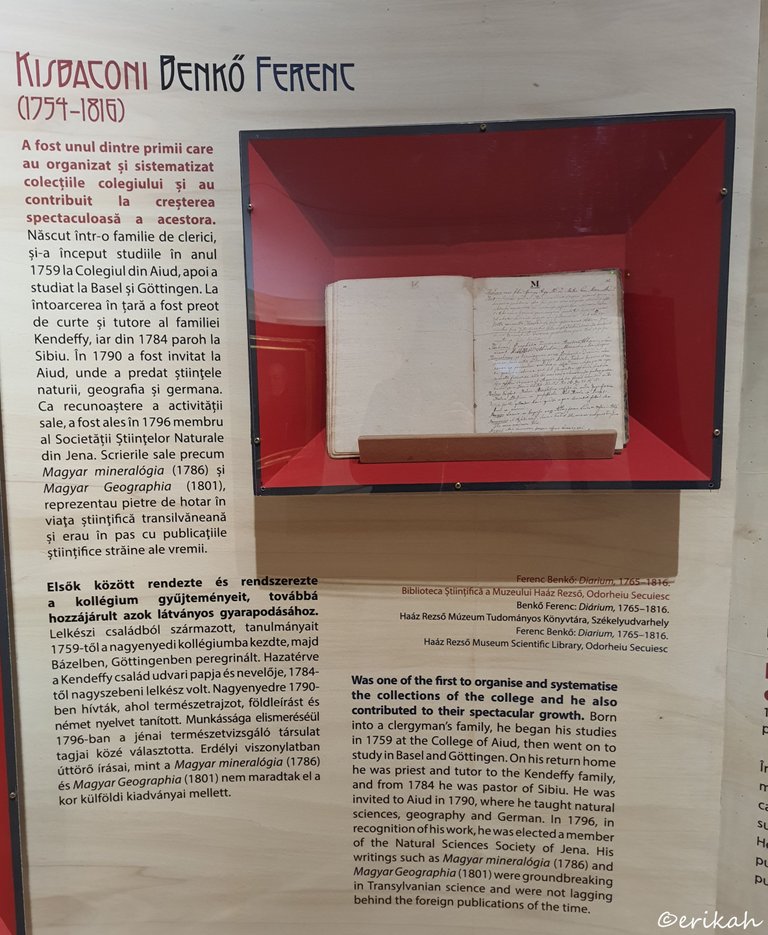
In every school's history there are prominent people who, with their contribution, made education better. One of such person was Ferencz Benkő Kisbaconi, who's writings were groundbreaking in the region's science.
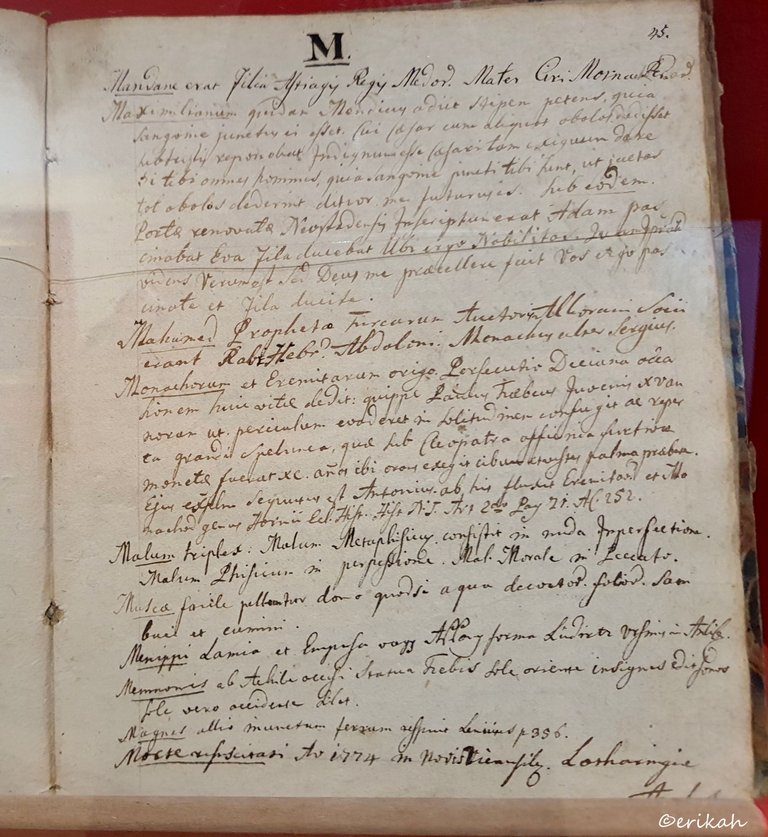
Look at that handwriting and also have a look at those letters. Some of them look really fancy. I suspect it's Latin, but can't be 100% sure. Now imagine writing an essay or a scientific work by hand, that you know it's going to be read by a lot of people.
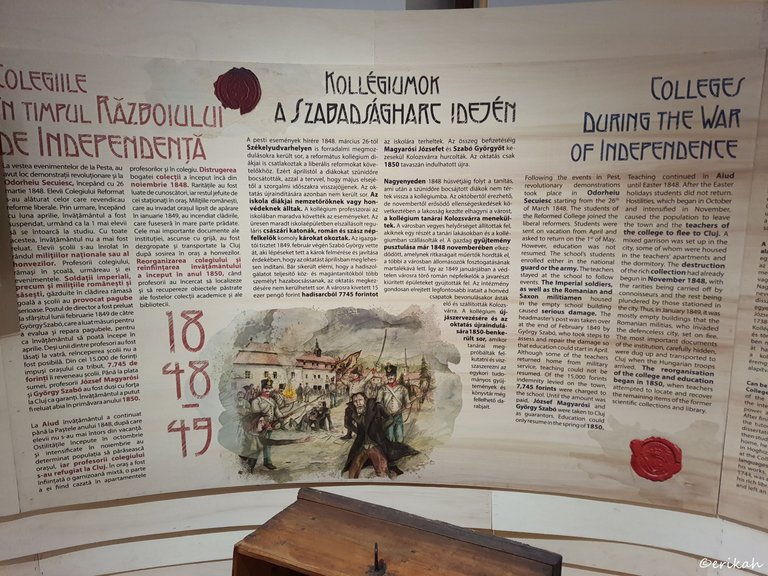
Then the Hungarian revolution happened in 1848.
The Hungarian Revolution of 1848, also known in Hungary as Hungarian Revolution and War of Independence of 1848–1849 was one of many European Revolutions of 1848 and was closely linked to other revolutions of 1848 in the Habsburg areas. Although the revolution failed, it is one of the most significant events in Hungary's modern history, forming the cornerstone of modern Hungarian national identity - the anniversary of the Revolution's outbreak, 15 March, is one of Hungary's three national holidays. source
It is commonly known that students are the first to start, or join a revolution as they are the ones with less or no obligations and also the most energetic. However, this is not the reason why education was disrupted. School buildings often are occupied by the army and become garrisons. That's what happened in the case of the college of Udvarhely, which led to considerable damages. The college of Enyed (Aiud) wasn't so lucky as it was set on fire. The tragedy in this is that their book collection and all the props they had, were destroyed. Those would worth a fortune now and I'm not referring to money here. Another important detail to think of is the school records, which are always testimony of the past.
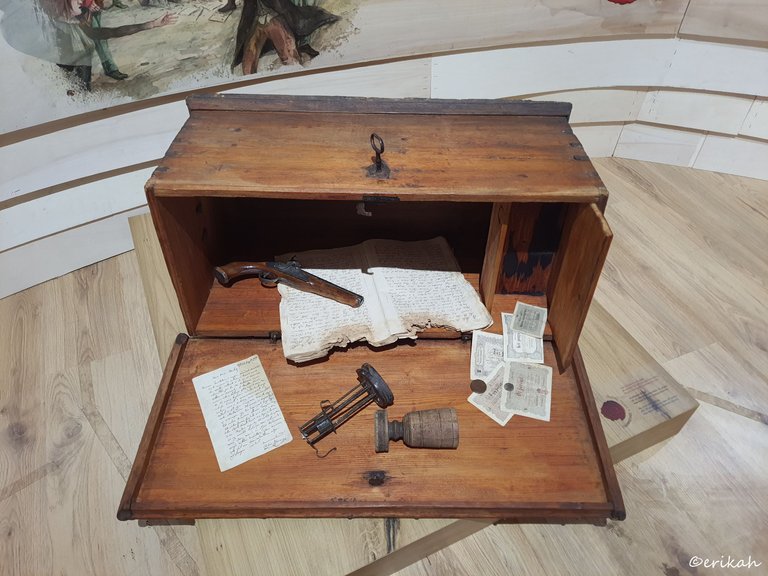
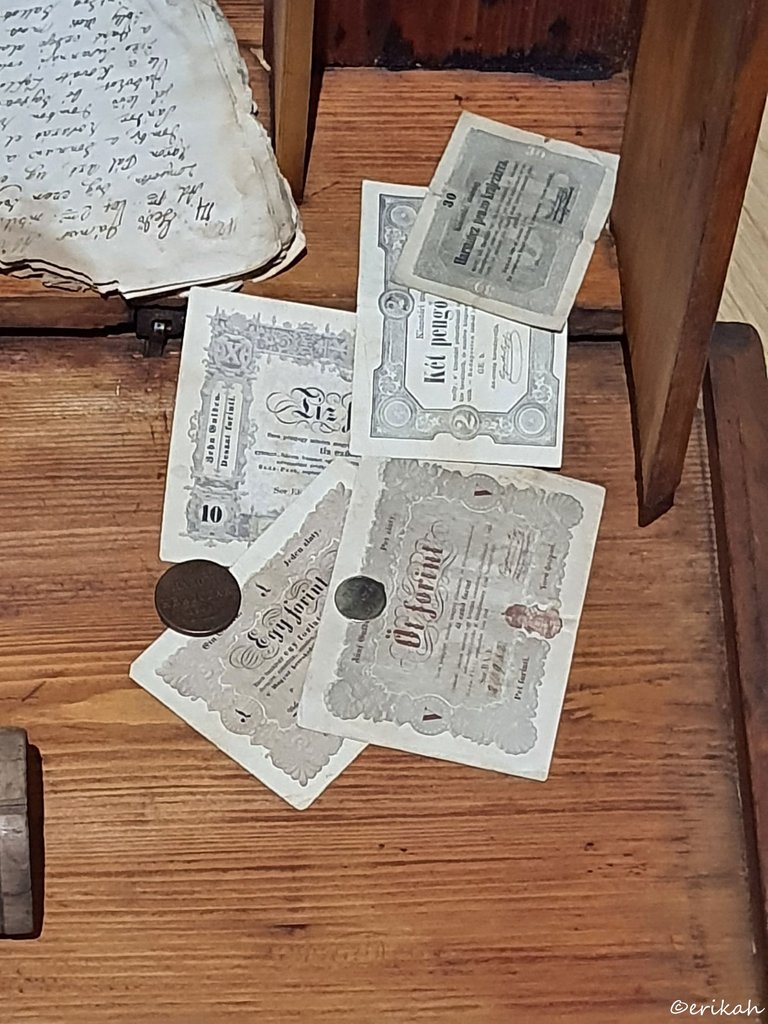
These were Hungarian banknotes and coins as back then these territories were part of Hungary, as I mentioned at the beginning of my post. Looking at them makes you think how easy may have been to forge them, or better yet, to detect counterfeit money. Technology was non existent. Also, these banknotes are quite small, but there were some of the size of an A5 paper.

A candle holder, which was as necessary as air back then as there was no electricity, and a cup I suppose.

The pistol is not exactly a school prop, but because we are talking about a period in which a revolution was going on, maybe they had pistols. The notebook might have been the victim of mice.
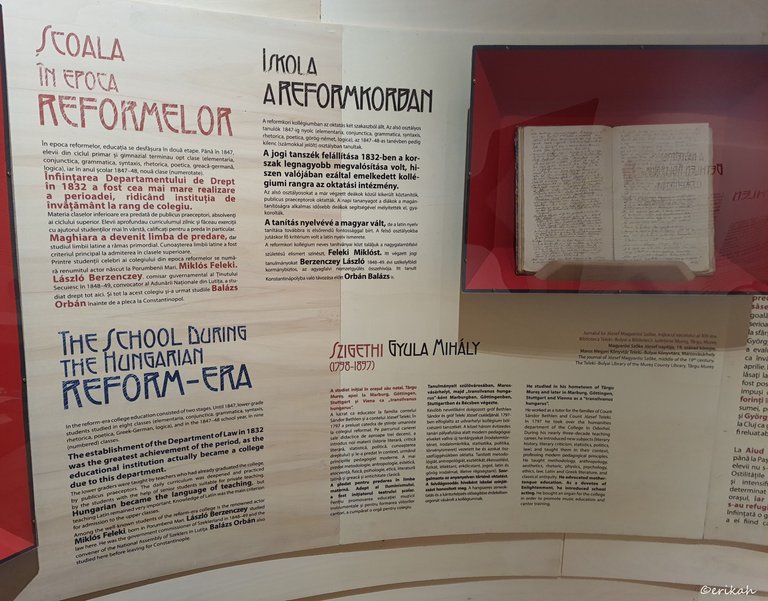

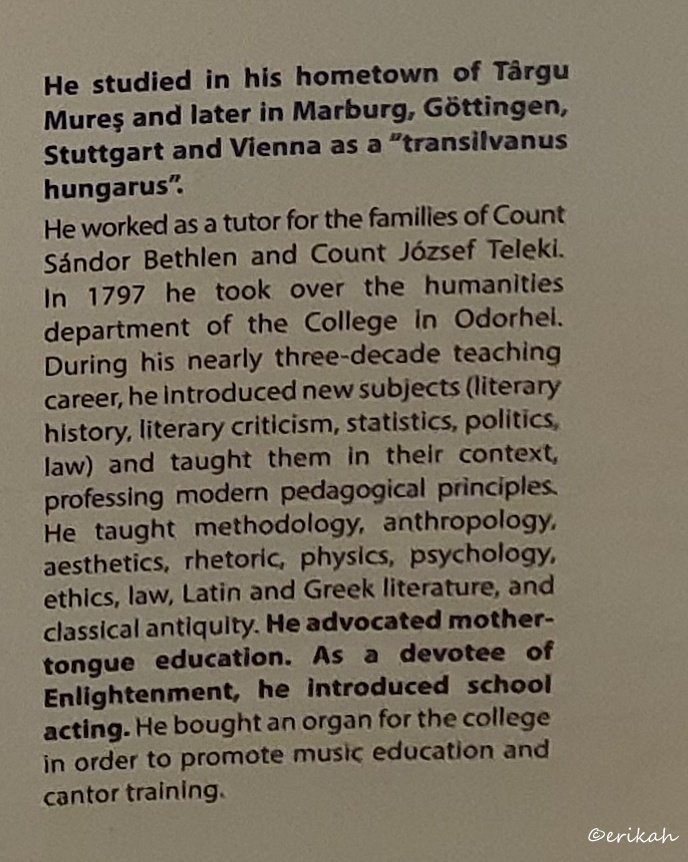
This is where it gets interesting. Gyula Mihály Szigeti loved between 1798 and 1897 and took over the humanities department of the College of Odorhei in 1797. In my yes, he can be considered one of the pioneers in pedagogy. The school system today is pretty complex and everything is decided at ministry level, schools have very little room to move, they have a schedule to follow and defined subjects to teach. Back in Szigeti's time, there was no such thing, there was no school system, each school had their own system, this is how he could diversify the subjects himself. He introduced school acting and promoted music education and cantor training as well, which must have been a blessing for many. These schools were exclusively religious schools, a good part of the students became priests after graduation, so studying music and playing he organ must have helped a lot. These subjects are still taught today, so I think we can say they are around 225 years old, or so.
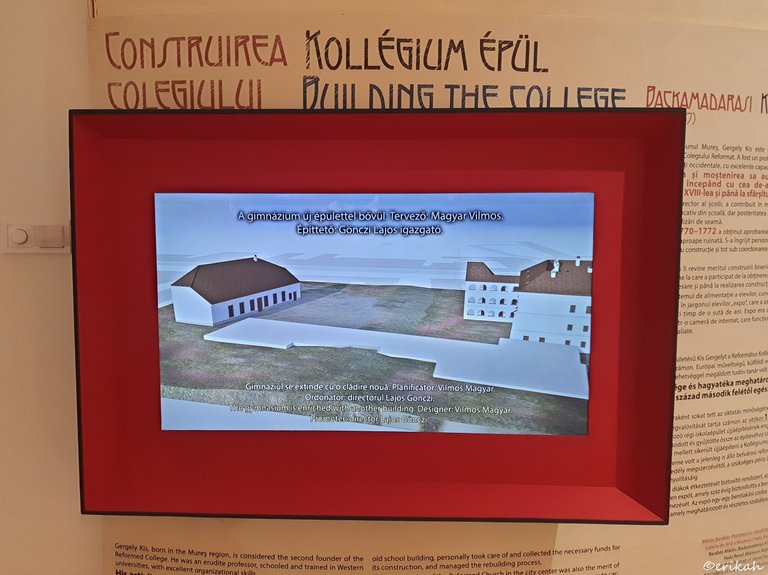
Thanks to the latest technology we have today, there's possible to reproduce the evolution of the college, even though most likely they only had some drawings and descriptions about the place, blueprints in the best case. This animated movie showed how the college as institution started and how it has developed in what it is today.
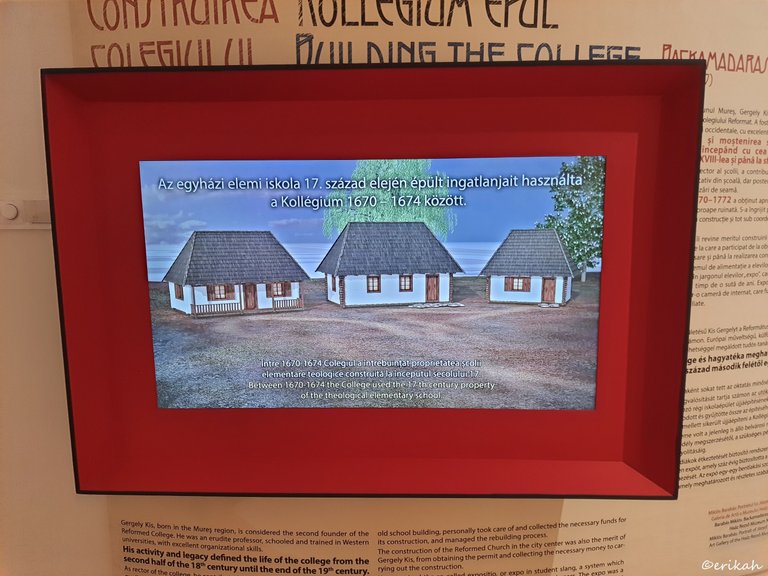
At first, between 1670 and 1674, they used the three buildings of the elementary school. As you can see, these were like regular houses. Then over the years, as demand started to increase, more buildings were added, then a new and a bigger one was built at some point, with boarding space as well, as many of the students were not locals.
I hope you liked this walk back in time. Stay tuned as next time I'm going to show you more interesting things of college life.

If you're a newbie, you may want to check out these guides:
- Communities Explained - Newbie Guide
- Cross Posting And Reposting Explained, Using PeakD
- Hive Is Not For Me
- How To Pump Your Reputation Fast - Newbie Guide
- Tips And Tricks & Useful Hive Tools For Newbies
- More Useful Tools On Hive - Newbie Guide
- Community List And Why It Is Important To Post In The Right Community
- Witnesses And Proposals Explained - Newbie Guide
- To Stake, Or Not To Stake - Newbie Guide
- Tags And Tagging - Newbie Guide
- Newbie Expectations And Reality
- About Dust Vote And Hive Reward Pool, by libertycrypto27

Las armas eran para estar preparado frente a cualquier nota baja que te entregará el profesor jajaja es increible pesar que hasta hace no muchos años era legal enfrentarse a duelo tanto con espada como con armas.
You're right about that and shows how much life has changed since then.
Very interesting, when you mentioned Transylvania, the first thing that came to my mention was Dracula, history and movies, a place with a lot of history and wars. Thanks for sharing blessings.
Yeah, some the people only know Dracula when Transylvania is mentioned. Well, history is everywhere and wars as well, Transylvania had its fair share of wars, of all kinds, had been through a lot over the centuries.
Very interesting. Looks like a great display combining historical artifacts, story boards and animations. The US had a tradition of one-room country schoolhouses on the frontiers in the 1800s but also had some universities that were well established by then. The establishment on the East Coast was much different than the West.
Back in those days, these one room and combined classes were very common as students were few. The sad thing is, there still are some in the world today. It's far from ideal though.
Is it really 400 years old? I don't think it's Latin, some of the words maybe. But there are languages who lend words from other languages
Back in those days Latin was the language they used, later came Hungarian.
But back in the day, any idea about what they've once taught?
Well, I can't be entirely sure but I think only the basics, reading, writing, math, religion as most if not all the schools were run by churches. It depends on what level we're talking about. Colleges most likely were offering more, like history, science, literature....